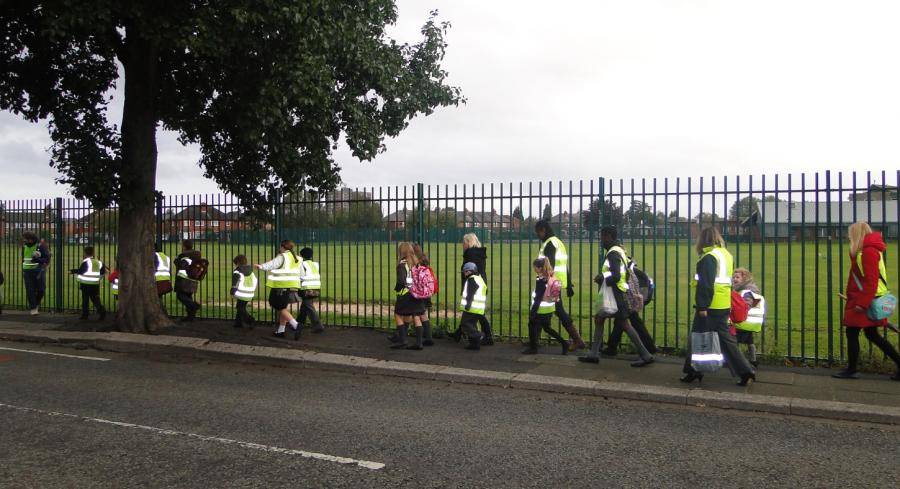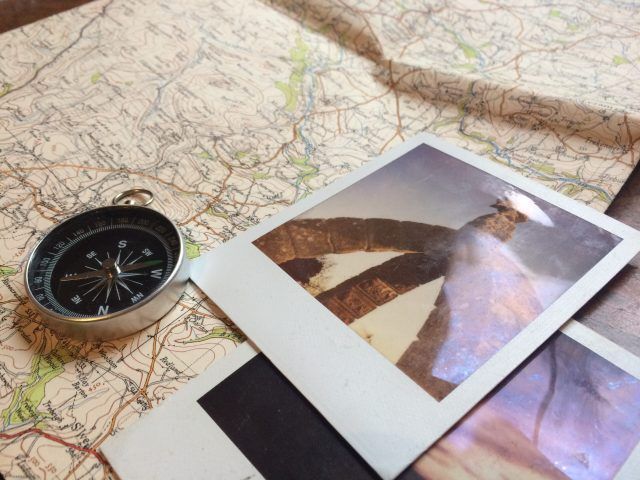Organise a school walking bus
A ‘walking bus’ supports kids to walk to school, safely chaperoned by adults. It not only boosts exercise and lowers carbon footprints, but sees different parts of the community working together.

What you will need
- A local school, with pupils living within walking distance.
- A questionnaire asking parents whether they’d like their children to take part in walking bus and whether they’d be interested in volunteering.
- Permission in writing from the parents.
- A register, taken at the start and end of the route.
- A ‘driver’ who leads the way and manages the rota and takes the register.
- ‘Conductors’ from your list of volunteers to supervise the children.
- A route — either from a muster point (for a kind of park-and-ride approach for kids who live further away) or a route with ‘stops’ where you pick up ‘passengers’.
- A timetable.
- A risk assessment of the route. Remember, walking buses don’t have a legal right to stop traffic, so use designated safe places to cross.
- Insurance. Contact your council and see if they will cover you under their public liability insurance. If not, Parentkind (formerly PTA UK) might be able to help.
- Disclosure and Barring Service checks (DBS, previously known as CRB checks) – the school might be able to help you to organise these. Check for any adults that help on the route unsupervised.
- Hi-vis jackets for children and adults.
- A name for your walking bus.


Instructions
1) Find a school
Meet with the headteacher of a local primary school to see if they would like to start a walking bus scheme.
2) Create a questionnaire
Put together a questionnaire to be distributed to parents via the school asking whether they would: a) like their children to take part b) prefer a pick-up or muster point approach c) volunteer to help.
3) Get permission from parents
Save time by asking them for permission in the survey; ask them to sign and return the form if they agree. Get the children to sign it too! You could make an announcement at a school assembly.
4) Plot the route
Plot the route based on the location of your ‘passengers’. If the route is too long then consider using a muster point instead with easy access to parking.
5) Make a timetable
Make a timetable for pick-up (and drop-off in the afternoon). That might be the whole route if you’ve got stops, or just the arrival and departure times if you’re using a muster-point model.
6) Gather your volunteers
Gather your volunteers and arrange for them to have some training from the council’s Road Safety Officer. Also arrange for DBS checks. They can take up to six weeks, so allow plenty of time.
7) Approach businesses
Approach businesses close to the school and ask if they’d like to sponsor the walking bus. You can put the money towards DBS checks and hi-vis jackets. You could also offer businesses the chance to put their logos on the jacket.
8) Plan a volunteer rota
You will need approximately one adult for every four children between five and seven, and one for every six children between the ages of seven and eleven, or one for every five children aged five to eleven — plus a ‘driver’. The walking bus doesn’t have to run every day; twice a week would be enough to make a difference.
9) Measure the impact
Do a survey of the number of cars parked outside school before and after the launch of the walking bus.
10) Have a launch
Tell the local paper and get the headteacher and someone from the council to come along.
What next?
Why not take part in national Walk to School Week? You could also consider giving a badge or sticker to every child that takes part in a certain number of walking buses.



